


PHYSICIANS
Lorem ipsum dolor sit amet, consectetur adipiscing elit. Nam maximus vehicula lacus a tincidunt. Nunc pharetra lectus diam, vel tincidunt est pellentesque non. In in nulla sit amet turpis aliquet blandit vitae a leo.AFFILIATIONS
Lorem ipsum dolor sit amet, consectetur adipiscing elit. Nam maximus vehicula lacus a tincidunt. Nunc pharetra lectus diam, vel tincidunt est pellentesque non. In in nulla sit amet turpis aliquet blandit vitae a leo.TREATMENTS
Lorem ipsum dolor sit amet, consectetur adipiscing elit. Nam maximus vehicula lacus a tincidunt. Nunc pharetra lectus diam, vel tincidunt est pellentesque non. In in nulla sit amet turpis aliquet blandit vitae a leo.SPECIALTIES
Lorem ipsum dolor sit amet, consectetur adipiscing elit. Nam maximus vehicula lacus a tincidunt. Nunc pharetra lectus diam, vel tincidunt est pellentesque non. In in nulla sit amet turpis aliquet blandit vitae a leo.CONDITIONS
Lorem ipsum dolor sit amet, consectetur adipiscing elit. Nam maximus vehicula lacus a tincidunt. Nunc pharetra lectus diam, vel tincidunt est pellentesque non. In in nulla sit amet turpis aliquet blandit vitae a leo.PATIENT RESOURCES
Lorem ipsum dolor sit amet, consectetur adipiscing elit. Nam maximus vehicula lacus a tincidunt. Nunc pharetra lectus diam, vel tincidunt est pellentesque non. In in nulla sit amet turpis aliquet blandit vitae a leo.Heart Conditions
Renovascular Conditions
Renovascular conditions harden or narrow the vessels that supply the kidneys with blood, preventing them from properly filtering wastes from your blood and helping to regulate blood pressure.
The three most common renovascular conditions are:
- Renal hypertension – high blood pressure in the kidney arteries
- Renal artery stenosis – narrowing of the kidney arteries
- Renal vein thrombosis – blockage of a kidney vein by a blood clot
What causes renovascular conditions?
Renal hypertension and renal artery stenosis are caused when plaque builds up and stiffens the inner walls of the renal arteries (a condition called atherosclerosis). Severe buildup can interfere with blood flow to the kidneys.
Renal vein thrombosis is commonly caused by nephrotic syndrome, a condition in which abnormally large amounts of a protein (called albumin) leak into the urine. It can also be caused by an injury to the vein, an infection or a tumor.
What are the symptoms of renovascular conditions?
Renovascular conditions often develop slowly, so you may not notice any symptoms right away. One common sign of renal artery stenosis is high blood pressure that becomes worse or stops responding to medication. Your doctor may also be able to hear a “whooshing” sound in your abdomen by listening with a stethoscope.
Renal vein thrombosis can cause a clot in your vein to break off and block blood flow to an otherwise healthy vessel. If this occurs, you may notice the following symptoms:
- Pain in the abdomen, legs or thighs
- Blood in your urine
- Fever
- Nausea or vomiting
- Sudden and severe swelling in a leg
- Difficulty breathing
Renovascular conditions can also lead to kidney failure, a life-threatening condition that causes the following symptoms:
- Puffy eyes, hands or feet
- Decreased appetite
- Nausea and vomiting
- Weight loss
- Muscle twitches or camps
- A bad taste in the mouth
- Itchy skin
- A yellow-brown tint to the skin
How are renovascular conditions diagnosed?
Your doctor can diagnose a renovascular condition using the results from the following tests:
- Ultrasound
- Angiography
- Spiral computed tomography (CT) scan
- Magnetic resonance angiography (MRA)
- Radionuclide scanning
- Doppler ultrasound
- Venacavography
How are renovascular conditions treated?
Renal hypertension and renal artery stenosis may be managed with medication and lifestyle changes, such as quitting smoking.
A sudden blockage may require a medical procedure or surgery to restore blood flow. Options include:
- Thrombolysis
- Angioplasty and stenting
- Endarterectomy (surgery)
- Surgical bypass








